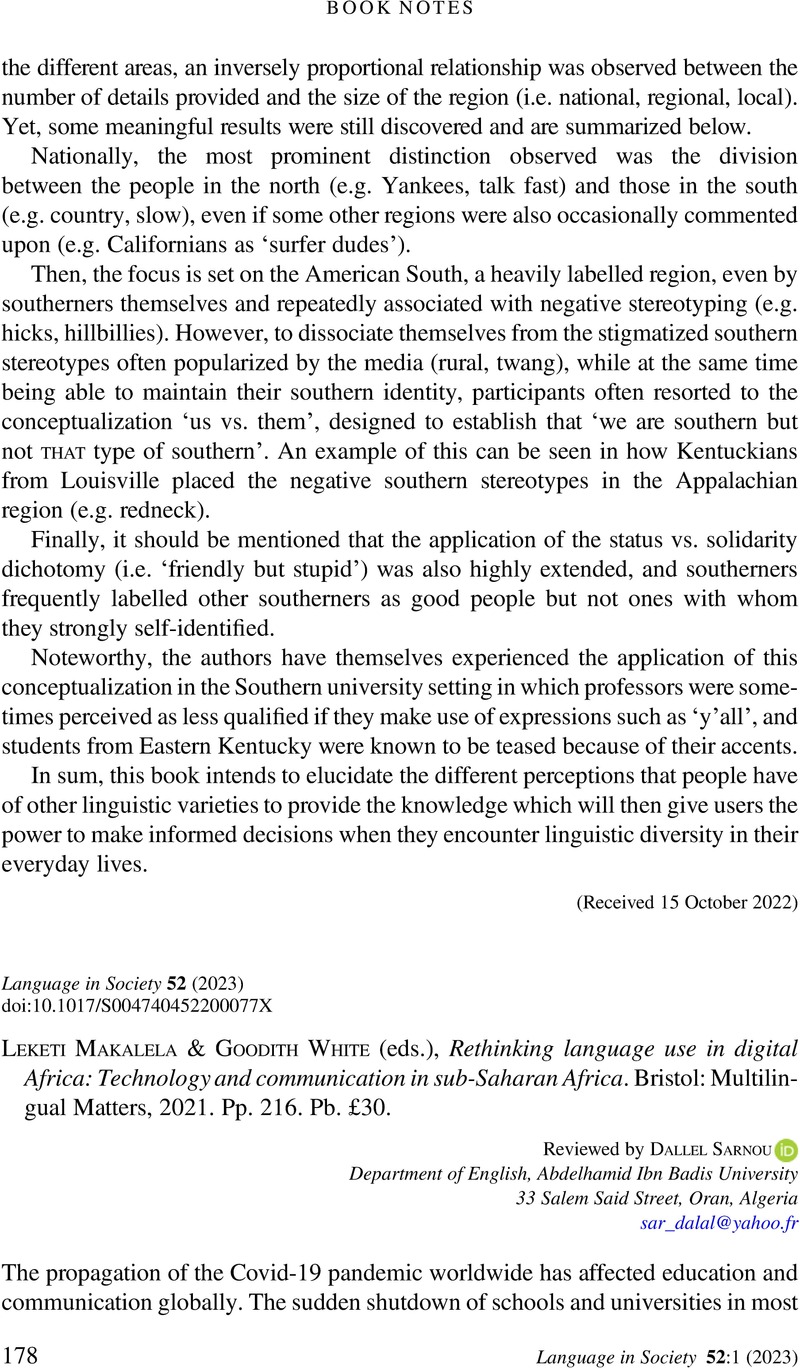No CrossRef data available.
Article contents
Leketi Makalela & Goodith White (eds.), Rethinking language use in digital Africa: Technology and communication in sub-Saharan Africa. Bristol: Multilingual Matters, 2021. Pp. 216. Pb. £30.
Review products
Leketi Makalela & Goodith White (eds.), Rethinking language use in digital Africa: Technology and communication in sub-Saharan Africa. Bristol: Multilingual Matters, 2021. Pp. 216. Pb. £30.
Published online by Cambridge University Press: 03 February 2023
Abstract
An abstract is not available for this content so a preview has been provided. Please use the Get access link above for information on how to access this content.

- Type
- Book Notes
- Information
- Copyright
- Copyright © The Author(s), 2023. Published by Cambridge University Press



